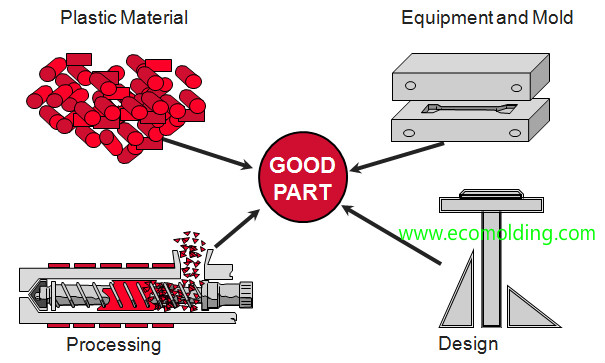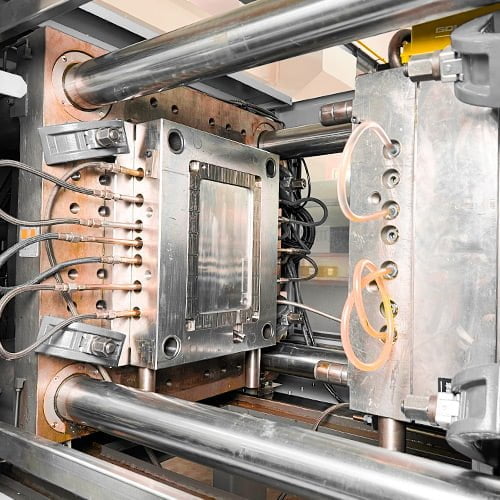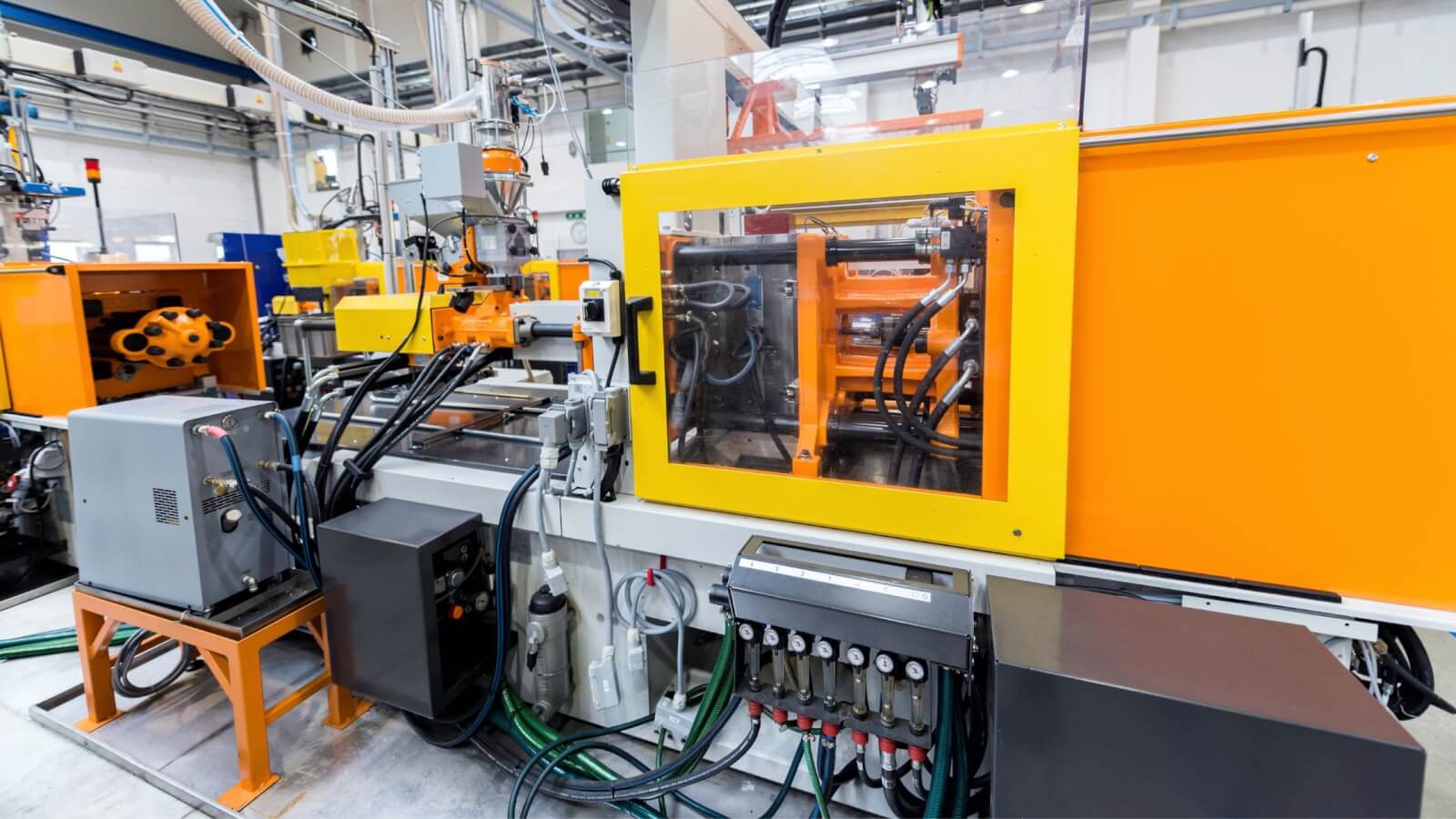Understanding the Plastic Injection Molding Refine for High-Quality Production
Understanding the Plastic Injection Molding Refine for High-Quality Production
Blog Article
Understanding the Fundamentals of Plastic Injection Molding Procedures
Plastic injection molding acts as a foundation of contemporary manufacturing, offering a methodical technique to creating complex elements with accuracy. This procedure not only incorporates the basic steps of melting and injecting products right into mold and mildews however also includes a nuanced understanding of numerous influencing factors, such as temperature and pressure. As markets progressively demand efficiency and quality, the ins and outs of this method end up being a lot more critical. Exploring these important components might reveal just how even small changes can lead to considerable renovations in manufacturing results, raising questions regarding the capacity for technology in this established procedure.
What Is Plastic Injection Molding?
Plastic shot molding is a widely used manufacturing process that transforms thermosetting and polycarbonate products into accurate and complicated shapes. This strategy is favored for its ability to create high volumes of the same get rid of outstanding accuracy, making it a crucial method in different sectors, including vehicle, durable goods, and medical tools.
The process involves thawing the picked plastic material and infusing it into a mold and mildew under high pressure. The mold and mildew, made to the specs of the preferred component, allows the liquified plastic to materialize as it cools and strengthens. As soon as the material has actually set, the mold is opened up, and the finished part is expelled.
Plastic shot molding uses several benefits, consisting of minimized waste, consistency in production, and the capacity to incorporate intricate layouts that may be challenging with other making methods. Furthermore, it supports a wide variety of products, each offering distinct properties that can be customized for particular applications. As sectors continue to innovate, plastic injection molding continues to be at the center, enabling the development of sophisticated items that meet progressing customer needs.
The Shot Molding Refine
The injection molding procedure is a sophisticated strategy that includes numerous crucial stages to create high-quality plastic parts. Initially, plastic pellets are fed right into a heated barrel where they are merged a thick fluid. This molten plastic is after that infused under high pressure right into a precision-engineered mold, which forms the material right into the preferred kind.
As soon as the mold and mildew is filled, the plastic is allowed to solidify and cool, taking the form of the mold and mildew tooth cavity. Air conditioning time is important, as it impacts the cycle time and the final properties of the molded part. After sufficient air conditioning, the mold and mildew opens, and the ended up element is expelled utilizing ejector pins.

Products Utilized in Injection Molding
Numerous products can be used in the injection molding process, each offering one-of-a-kind residential properties that satisfy details applications. The most typically utilized products include thermoplastics, thermosetting plastics, and elastomers.

Thermosetting plastics, like epoxy and phenolic resins, undergo a chemical change during the curing procedure, causing an inflexible, inflexible structure. These materials are excellent for applications calling for high heat resistance and structural honesty, typically utilized in electric insulators and automotive parts.
Elastomers, consisting of silicone and rubber-based products, supply versatility and strength. Their distinct buildings make them ideal for applications that require flexibility, such as seals and gaskets.
Furthermore, specialized materials like bio-based plastics and compounds are obtaining traction for their ecological advantages and enhanced performance attributes, expanding the scope of shot molding applications in numerous markets. Comprehending the residential properties of these products is essential for choosing the proper type for certain projects.
Advantages of Shot Molding
Shot molding stands out as an extremely efficient production process that provides numerous advantages for generating complicated parts with precision. Among the most significant advantages is the capability to develop intricate layouts that would be challenging or difficult to attain with other techniques (Plastic Injection Molding). The process allows for tight tolerances and in-depth attributes, ensuring premium parts
In addition, injection molding is understood for its rapid manufacturing capacities, Going Here making it an optimal option for high-volume production. Once the mold is developed, parts can be created swiftly, decreasing preparations and raising overall performance. This effectiveness not only reduces production prices yet additionally supplies an one-upmanship on the market.
The convenience of products utilized in injection molding further improves its appeal. A wide variety of thermoplastics and thermosetting polymers can be employed, enabling manufacturers to choose products that best meet their specific requirements, including toughness, warm, and flexibility resistance.
Furthermore, the process reduces waste, as excess material can typically be recycled and reused. This sustainability facet adds to a minimized ecological influence, making shot molding an accountable production selection. On the whole, the advantages of shot molding make it a preferred technique for several sectors.
Elements Impacting Item High Quality
While many factors can influence item quality in shot molding, understanding these components is vital for achieving optimal results. Trick aspects include product choice, refining parameters, and mold and mildew layout.
Product selection plays an important function, as different polymers exhibit unique buildings that impact flowability, stamina, and thermal security. Insufficient material selection can result in flaws such as bending or insufficient filling.
Handling specifications, consisting of temperature level, pressure, and cycle time, must be thoroughly regulated. Variants in these settings can lead to disparities in component dimensions and surface area coating. Excessively high temperature levels may cause destruction of the polymer, while poor pressure can result in short shots.
Mold layout is equally crucial, as it determines the circulation of the molten plastic and the cooling procedure. Inadequately designed mold and mildews might lead to uneven cooling prices, causing dimensional inaccuracies and residual tensions.

Conclusion
To conclude, plastic shot molding acts as a critical production procedure that enables the effective production of top notch parts. Proficiency of the shot molding procedure, including the understanding of materials and the impact of various variables on product high quality, is essential for attaining optimal outcomes. The advantages of this technique, such as cost-effectiveness and layout flexibility, additional highlight its importance throughout several markets, solidifying its condition as a recommended selection for high-volume production.
Plastic shot molding serves as a cornerstone of contemporary production, providing a systematic technique to generating complicated elements with precision.Plastic injection molding offers several advantages, consisting of minimized waste, consistency in manufacturing, and the capacity you could look here to incorporate complex styles that may be testing with various other making methods (Plastic Injection Molding). As sectors continue to introduce, plastic shot molding remains at the leading edge, enabling the advancement of innovative items that satisfy progressing consumer needs
The injection molding procedure is a sophisticated method that involves several vital stages to produce high-quality plastic elements.In conclusion, plastic shot molding offers as a vital manufacturing procedure that makes it possible for the efficient production of top quality components.
Report this page